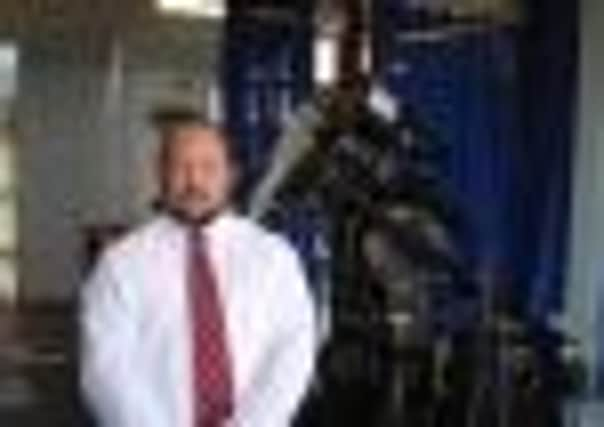Scientist to disprove golf ball top spin myth


Dr Steve Otto, a former NASA scientist, is ready to debunk several golfing myths as part of a special lecture exploring the physics behind the sport as part of the Edinburgh International Science Festival later this month.
The director of research and testing at golf’s world governing body, the R&A, will prove golfers cannot hit a ball with “top spin” off the tee despite widespread assertions from commentators covering the PGA Tour.
Advertisement
Hide AdAdvertisement
Hide AdHe said it was also a misconception that professional golfers were hitting the ball further than ever before.
Dr Otto said: “All too often, unfortunately, you hear commentators say ‘he’s hit that one with top spin’. I can hit a drive with top spin and it carries about an inch. If you hit a ball with top spin, it falls out of the air.
“That’s my favourite myth – a well-struck drive would never have top spin because it simply won’t fly.
“Basically, lift is pointing downwards, gravity is pointing downwards. It’s a lose-lose situation. There is, however, top spin on putts. Top spin on putts is a good thing. It gets the ball rolling. People insist on the ball going further and the big players hitting it further. It’s simply not true.
“It’s one of those things that people will rely on a single shot to make a case, that I saw this player hit the ball 360 yards. They can do that, but they don’t do it all the time and they forget to mention there was wind behind them.
“In fact, there are fewer players hitting the ball over 300 yards now then there was back in 2005. Hitting the ball a long way doesn’t tend to win you golf tournaments. We also changed the rules on club grooves in 2010 to make there be more of a premium for getting it in the fairway.”
Research insights into shaft dynamics, metallurgy and ball construction will all be discussed at the festival lecture.
Specially commissioned video evidence recorded at Muirfield – the venue for this year’s British Open championship in July – will also be used to support Dr Otto’s lecture.
Advertisement
Hide AdAdvertisement
Hide AdThe talk, entitled The Science of Golf from Tee to Green, will prove that where the ball lands after a shot has already been determined by the parameters of spin, velocity and the dimple pattern on the ball.
Dr Otto said: “The ball accelerates from zero to 180mph in less than a thousandth of a second. In that split second, the impact between club and ball takes place. The interaction between how the club approaches the ball and the sliding between club and ball basically determines how much spin it’s got, the direction it’s going and that in combination with the wind will tell you where it’s going to finish on the fairway.
“It’s one of those things that is probably better for golfers not to think too much about. If you were standing over a ball trying to think which law of physics you were going to apply, you’re probably not going to hit a great drive.”
A laboratory robot was used to test the theories. Dual Open champion Padraig Harrington also hit 330 shots in a trial in Belfast in 2011 for a database.
Dr Otto said the research wuill help decide the game’s future and equipment rules.
The lecture is on at the National Museum of Scotland on March 30 from 5.30pm.